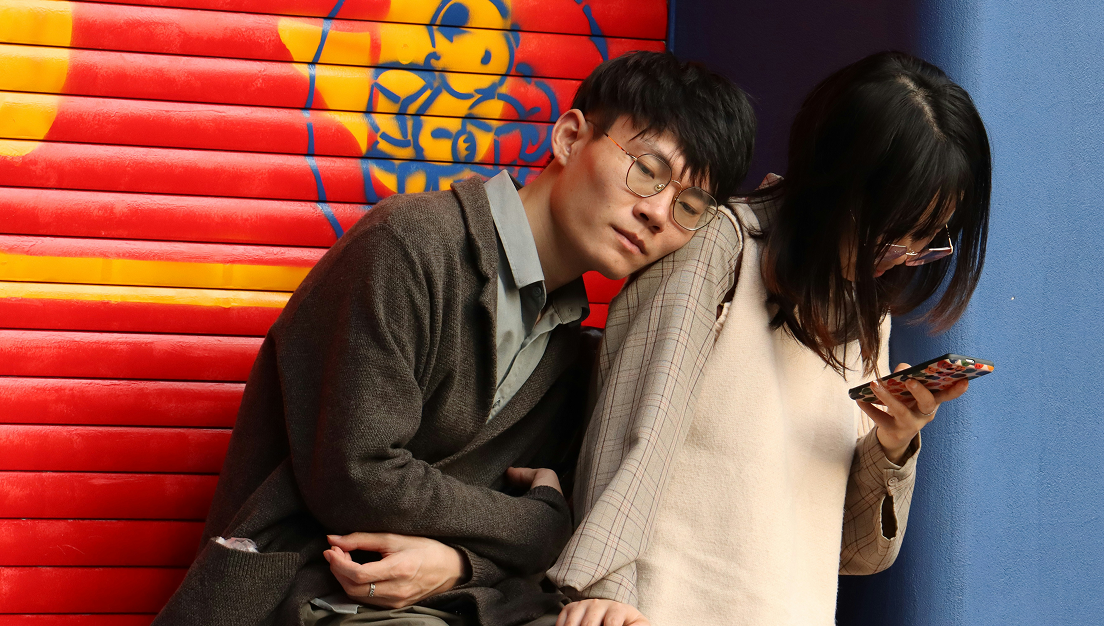After taking a required Intro to Psychology course as an undergrad, I have never looked back. Since my doctoral program, I have specialized in adult relationship therapy. Through my studies and clinicals, I wrote several articles for professional journals and currently in the midst of writing a book.
18 Varieties of Relationships
Types of relationships. They can be simple, such as those between casual friends and lovers – or terribly complex, such as those with a former relationship or a complicated relationship among polyamorous people. And by the way, most different types of relationships overlap, making the subject even more complex.
Still, it can be enlightening to study the types of relationships so that we can understand their characteristics and define our own with the people in our lives. There are many more than you may think. Here we go!
1. Acquaintances
These are individuals who recognize one another and who may even be in some of the same professional or social groups. They greet each other, exchange pleasantries, and sometimes have short chats. As for spending time together by choice, not so much.
Acquaintances might be neighbors, classmates, people at the gym, or co-workers with whom you are not at all close.
In general, acquaintances are polite and friendly but do not make plans to get together, unless the acquaintance begins to grow into a casual friendship.
2. Casual Relationships
Among the types of relationships, casual relationships are the most common in a person’s social life. A casual relationship is characterized by enjoying each other and making plans to get together and do things together.
There is a bit of an emotional connection because casual friends share personal things about themselves. They may talk about their work and their feelings about their co-workers or share stories about their experiences. This interpersonal relationship is pleasant and comfortable.
Such friendships can be same-sex or heterosexual, but they are not romantic relationships. Over time, a stronger relationship can develop, and casual friendships will turn into intimate ones, including a romantic or even sexual relationship.
Relationships that remain casual often end if one friend changes jobs or moves to another town. There is just no strong connection that makes a long-distance relationship valuable.
Related reading: 14 Signs a Casual Relationship Is Getting Serious

3. Close Friends
These types of relationships are with a much smaller group than casual ones. Close friendships develop over time and reflect an emotional attachment and concern for each other’s well-being.
In close friend relationships, both feel safe sharing lots of personal and intimate information, looking out for each other, giving and taking advice and emotional support, including each other in major events, and spending lots of time together.
Generally, these relationships develop between two people who are close in age and who share similar lifestyles. They also spend quality time together. In fact, some researchers say it takes about 200 hours of such time for a close relationship to develop.
If both people in a close-friend relationship share equally in their care and concern for each other, it’s a healthy relationship. If not, it can become a toxic relationship in which one takes advantage of and manipulates the other. They are what we call a “fake friend.”
4. Intimate or Platonic Relationships
A platonic relationship is a term that comes from the philosopher Plato and refers to a relationship that is more than casual.
If you have a platonic relationship, you have an emotional and spiritual attachment to another person. Usually, it is based on the same interests, values, and a shared belief system. Platonic friends feel safe sharing their innermost thoughts and feelings -no topic is off limits.
The other key to defining this relationship is that it is neither romantic nor sexual. It really is all about being in tune with another person and they with you. This relationship status can be between two women, two men (a bromance), or a male and female. Now, sometimes close emotional and intellectual connections between a man and woman can ultimately result in romantic feelings and even sexual relationships, but then the lines of the relationship become blurred. If the original platonic connection remains, the relationship dynamics will be happy and healthy. And because the emotional and spiritual connections came first, this couple has the best of both worlds.
If the romance and sex don’t work out, though, it is often the end of the earlier relationship too – a serious loss for both.
Related reading: Appreciating a Platonic Soulmate
5. Parent-Child (Family Relationships)
Here’s an area where relationships vary widely among family members, based on their roles and also the relationships within the unit. In a normal family situation, parents are full caregivers of their children, sometimes even having an almost sacrificial relationship – they may ignore their own needs because those of their children come first.
As children grow, their relationships with their parents change. They become more independent, even rebellious, as they chart their own way to adulthood.
Related reading: Does Your Man Have Mommy Issues?
6. Siblings
Relationships between and among children in the same family also differ widely. Some develop intimate friendships; some develop close relationships or exist as simply casual friends, even mere acquaintances.

7. Marriage
Husbands and wives begin their marriages in romantic relationships and physical intimacy, committed to a monogamous relationship as sexual partners. Over time, things can change:
- The original romantic relationship can give way to a partnership of mutual priorities and the demands of life – raising kids, careers, managing finances, saving for retirement, etc. Life just gets in the way sometimes. These are still monogamous relationships, but the initial “fire” has burned down to just coals.
- Sometimes a married couple falls out of love and divorces – it happens to about 43% of marriages in the U.S. Now there is no longer a romantic or sexual relationship. The connections now relate to money and child custody/visitation (if there are kids involved).
- One spouse is unhappy or bored in the marriage. And so, they look for what they are missing somewhere else. These types of relationships can be just sexual attraction, or they may turn into romantic relationships. The original spousal connection is now an unhappy relationship. Partners are clearly no longer on the same page in their relationship. At best, this is an insecure relationship for the spouse whose partner has gone outside the marriage.
8. Romantic Relationships
A romantic relationship usually begins “hot and heavy.” Feelings of love and attraction are at their height and can be a combination of infatuation, physical attraction, passion, and intimacy. Much of this is the result of brain activity that causes euphoria.
Over time, this initial “fire” does die down somewhat. This is natural as the initial high evolves into a serious relationship based on a deeper connection based on common values, goals, and such. This will most likely become an exclusive relationship. Romantic partners who continue to build on their connections will end up in long-term relationships, most often monogamous.
And these two partners work to keep their romantic relationship healthy. Such relationships have a good chance of survival as long as they work to keep the romantic attraction strong. Each romantic partner works to spend quality time together and keeps the lines of communication open; they give each other the independence they need; and they work toward shared goals, achieving compromise when there are disagreements or issues. Such relationships often end up in that legally binding union known as marriage.
Related reading: A Guide to Growing an Exclusive Relationship

9. Sexual Orientation
Of all the different types of relationships, this one has so many variations. These types of relationships take on many forms, as do the sexual interactions involved. There are heterosexual sexual relationships. These are between a male and a female and can be casual or more long-term, depending on the purposes.
There are also members of the LGBTQ+ community – gays, lesbians, bisexuals, transgenders, etc. – who experience sexual attraction in their own ways. Again, these relationships can be anything from one-night hookups to long-term partnerships that are also romantic.
10. Casual Sex
Some people just like sex but not committed relationships of any kind. They date for a singular purpose and enjoy brief casual relationships that focus on sex. They may have more than one partner at the same time and break things off to engage other sexual partners as they become physically attracted to them. Romantic love and any kind of committed relationship are not on their agenda for now. Some call these people players – probably a good term for them.
Related reading: What is NSA in Dating? Let Freedom Ring!
11. Friends With Benefits
In one session of the comedy series, Seinfeld, Elaine and Jerry are discussing having a relationship that involves staying friends but still having sex. It’s pretty hilarious as they try to work out all of the details of this relationship, including how they would undress and dress, when the lights would be on and off, if they would spend the night, and if so, how they would say goodbye in the morning.
As humorous as this sounds, it is a legitimate relationship. Good friends decide to engage in sex with each other because they are not interested in a romantic relationship at the time. This works for some. The issue may come up eventually that, if either one of them ends up wanting a romantic relationship with someone else they have met, how does the relationship revert to a close friendship when you have also been a sexual partner?
Obviously, sex is a part of most romantic relationships (exception below), and romantic sex relationships were already discussed. The basic types of relationships are those covered above. Beyond these basic types, though, are those that vary greatly from what society usually considers the norm. These are the last relationship types in this list.
Related reading: 11 Friends With Benefits Rules to Keep Things Chill
12. Open Relationships
This label usually refers to couples who are married or in long-term partnerships but who have decided that each may have multiple partners outside of their relationship. An open relationship of this type may include such activities as joining swingers’ clubs/groups where everyone celebrates open relationships with partners who each find their own “extra” partners for love and/or sex. An open relationship can be successful as long as both original partners establish their relationship boundaries and stick to them. if so, consensual non-monogamy can work.
Related reading: Rules of Open Relationships
13. Polygamy
No need for a great deal of explanation here. This is a patriarchal situation in which one man takes more than one person into marriage. It’s common in some sects of the Mormon faith.
14. Trophy Relationship
This type of relationship has often been the brunt of jokes. A wealthy older man takes a much younger woman for a wife, to boost his standing among his friends. In reality, many women do the same thing – they are called cougars. The motivations of the younger partners may vary – not all of them are in it for the money.
15. Polyamorous Relationships
In general, this type of relationship means that there are more than two people involved in a long-term relationship. It differs from polygamy where a man “takes” one or more partners in addition to his wife. Polyamory is focused on equality among the partners. They are all in a committed relationship with each other; they share finances, tasks, and each other sexually.
Related reading: Loving More Than One – Is It Possible?
16. Asexual Relationship
Yes, there are people who have little-to-no interest in sex. They want a relationship based on other things – intellectual, spiritual, emotional, and even romantic. Their relationship values may seem to you, but these partnerships can be very successful and long-lasting.
17. Toxic Relationships
These relationships are not limited to couples. They can exist in a family and friendship relationship too. In this situation, one of the two members is a giver, the other a taker. And it is normally a controlling relationship with a dominant partner in charge and manipulating the other into submission until they often lose a sense of who they are. The “giver” often suffers from low self-esteem and may have a relationship history of failures. This kind of toxicity usually leads to a love-hate relationship, and it is never healthy. Narcissists thrive in these relationships, and they often include verbal, emotional, and even physical abuse.
18. Codependent Relationships
This is a type of toxic relationship that is unhealthy. In a codependent relationship, there is a giver and a taker. But unlike the purely toxic situation, both the giver and taker are getting their unhealthy needs met. Consider the drug-addicted adult child who still lives at home with their mother because they depend on her for all of their basic living needs and the money for their drugs. The mother needs someone to be dependent on her, so she continues to enable this child.
Related reading: How to Stop Being Codependent and Reclaim Your Life
Different Types of Relationships Are Similar in One Thing: They Evolve
Even though they may be of the same type, no two relationships are the same. But we are all involved in many of these types of relationships throughout our lives. As we move forward, though, we must also be prepared for the relationships changes that are bound to happen. Be open to making the best of your good relationships and to changing or ending those that are not.








